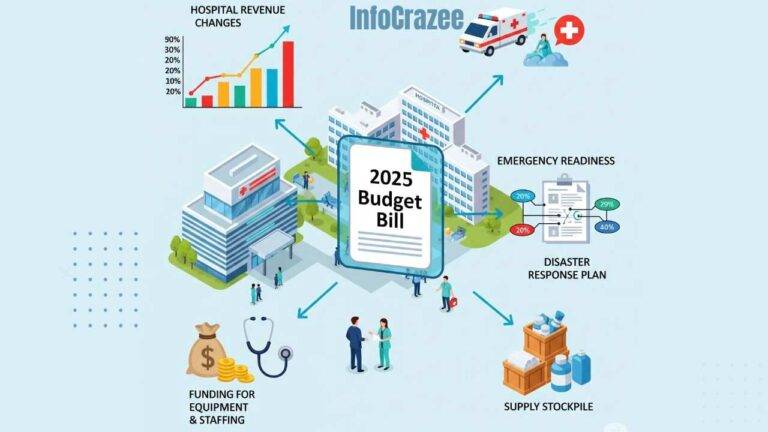How Next-Generation Firewalls Strengthen Modern Healthcare Cybersecurity Strategies
In 2025, healthcare organizations face an escalating cyber threats landscape, with ransomware attacks surging 27% from 2023 to 2024 and data breaches costing an average of $10.1 million per incident in the sector. As digital transformation accelerates—encompassing electronic health records (EHRs), telehealth platforms, and connected medical devices—securing sensitive patient data and ensuring operational continuity are paramount. Next-generation firewalls (NGFWs) have emerged as a cornerstone of modern healthcare cybersecurity strategies, offering advanced capabilities to combat sophisticated threats. This blog explores how NGFWs strengthen cybersecurity in healthcare and why they are critical for protecting patient trust and compliance.
The Evolving Threat Landscape in Healthcare
Healthcare and AI systems are prime targets for cybercriminals due to the value of protected health information (PHI) and the critical nature of healthcare services. Key threats in 2025 include:
- Ransomware and Phishing: Attackers exploit vulnerabilities in remote access systems or email to deploy ransomware, disrupting hospital operations.
- IoT Vulnerabilities: Connected medical devices, such as infusion pumps and imaging systems, are often unsecured, providing entry points for attackers.
- Supply Chain Attacks: Third-party vendors, integral to healthcare ecosystems, are increasingly targeted, compromising interconnected Ren in 2024 to 1,373 in 2023), healthcare organizations must adopt robust defenses.
What Are Next-Generation Firewalls?
NGFWs go beyond traditional firewalls by combining deep packet inspection, intrusion prevention, application awareness, and threat intelligence to provide comprehensive network security. Unlike legacy firewalls, NGFWs operate at the application layer, enabling granular control and real-time threat detection. Leading providers like Palo Alto Networks, Fortinet, and Cisco offer NGFWs tailored for healthcare’s unique needs.
How NGFWs Strengthen Healthcare Cybersecurity
1. Advanced Threat Prevention
NGFWs leverage machine learning and cloud-based threat intelligence to detect and block sophisticated threats:
- Zero-Day Threat Detection: NGFWs identify unknown malware and exploits by analyzing behavior patterns, protecting against novel attacks targeting EHR systems or telehealth platforms.
- Encrypted Traffic Inspection: With 80% of healthcare network traffic encrypted in 2025, NGFWs decrypt and inspect SSL/TLS traffic to uncover hidden threats without compromising performance.
- Example: A regional hospital used a Palo Alto Networks NGFW to block a ransomware payload hidden in encrypted traffic, preventing a potential outage in 2024.
2. Application-Aware Security
Healthcare relies on diverse applications, from EHRs (e.g., Epic, Cerner) to collaboration tools (e.g., Microsoft Teams). NGFWs provide:
- Application Control: Granular policies allow specific application functions (e.g., secure file transfers in EHRs) while blocking unauthorized apps, reducing the attack surface.
- User-Based Policies: Integration with identity management systems ensures only authorized users access sensitive systems, critical for HIPAA compliance.
- Impact: Prevents data leaks from unsanctioned apps and enforces role-based access control.
3. Segmentation and Zero Trust Architecture
NGFWs enable network segmentation, a key component of zero trust security:
- Micro-Segmentation: Isolates critical systems (e.g., radiology, billing) from less secure devices like guest Wi-Fi or IoT, limiting lateral movement during breaches.
- Policy Enforcement: Dynamic policies based on user, device, and location ensure only necessary access is granted, reducing insider threat risks.
- Example: A 2025 breach at a mid-sized clinic was contained within a guest network segment due to Fortinet NGFW policies, protecting patient data.
4. Compliance and Audit Readiness
HIPAA, GDPR, and HITECH require stringent data protection and audit trails. NGFWs support compliance by:
- Comprehensive Logging: Detailed logs of network activity simplify audits and investigations, meeting regulatory requirements.
- Data Loss Prevention (DLP): Built-in DLP capabilities prevent PHI from leaving the network, flagging sensitive data like Social Security numbers or medical records.
- Impact: Reduces penalties and reputational damage by ensuring compliance with evolving regulations.
5. Scalability for Hybrid and Cloud Environments
As healthcare adopts hybrid and multi-cloud architectures, NGFWs provide:
- Cloud-Native Support: Virtual NGFWs (e.g., Cisco Secure Firewall Cloud Native) secure cloud-hosted EHRs and telehealth platforms on AWS or Azure.
- Centralized Management: Unified dashboards streamline policy enforcement across on-premises, cloud, and remote sites, critical for large health systems.
- Impact: Ensures consistent security as healthcare organizations scale digital initiatives.
6. Integrated Threat Intelligence and Automation
NGFWs leverage global threat intelligence and automation to stay ahead of attackers:
- Real-Time Updates: Cloud-delivered threat feeds block known malicious IPs and URLs, critical for defending against phishing campaigns targeting healthcare staff.
- Automated Response: Integration with Security Orchestration, Automation, and Response (SOAR) platforms enables rapid containment of threats, reducing dwell time.
- Example: A Fortinet NGFW automatically quarantined a compromised medical device in 2025, preventing a ransomware spread.
Real-World Impact in 2025
- Case Study: Mayo Clinic: Deploying NGFWs across its network reduced incident response time by 35%, protecting patient data during a surge in phishing attacks.
- Ransomware Mitigation: A California hospital used an NGFW to block a zero-day exploit, avoiding a repeat of a 2024 attack that cost $1.2 million in recovery.
- Telehealth Security: A telehealth provider secured patient video sessions with an NGFW, ensuring HIPAA-compliant encryption and access control.
Challenges and Best Practices
While NGFWs are powerful, healthcare organizations must address:
- Complexity: Proper configuration requires skilled staff or managed services to avoid misconfigurations.
- Cost: High upfront costs for enterprise-grade NGFWs can strain budgets, though cloud-based options offer scalability.
- Integration: NGFWs must integrate with existing security stacks (e.g., SIEM, endpoint protection) for maximum efficacy.
Best Practices:
- Conduct regular security assessments to identify vulnerabilities.
- Train staff on phishing awareness to complement NGFW protections.
- Leverage managed security services to bridge skill gaps.
The Future of NGFWs in Healthcare
By 2030, NGFWs will evolve with AI-driven threat prediction, zero trust automation, and deeper integration with IoT security frameworks. As healthcare embraces 5G-enabled devices and AI diagnostics, NGFWs will play a pivotal role in securing real-time data flows and protecting patient safety.
Conclusion
Next-generation firewalls are indispensable for modern healthcare cybersecurity, offering advanced threat prevention, compliance support, and scalability. By integrating NGFWs into a layered security strategy, healthcare organizations can safeguard PHI, ensure operational continuity, and maintain patient trust in an increasingly hostile threat landscape. For CISOs and IT leaders, investing in NGFWs is not just a technical decision—it’s a strategic imperative to protect lives and livelihoods in 2025 and beyond.



![Write page title Page titles should be around 580 pixels in length. Or meta description Meta descriptions should be around 920 pixels in length. On[ Healthcare Mergers and Acquisitions: Key Highlights from 2025 ] that is clear, simple, and engaging, using a friendly and conversational tone. Avoid generic or overly formal words like "delve," "comprehensive," or "leverage." Instead, use natural language that feels human and relatable. Structure the content with headings, subheadings, and bullet points to make it easy to scan and read.please give me Focus keyphrase.](https://infocrazee.com/wp-content/uploads/2025/08/wfucgw-dpcsjx-7-768x432.jpg)